Article Content:
What is DOOH and How Does It Work?
The Evolution of DOOH Advertising
Prime Locations for DOOH Ads
The Advantages of DOOH Advertising
How DOOH Enhances Brand Awareness
and Consumer Engagement
Case Studies in DOOH Advertising
Amid the relentless evolution of the digital advertising industry, DOOH (Digital Out of Home) has emerged as a powerful wave, offering fresh and exciting opportunities for brands. From towering displays on buildings to interactive screens at bus stops, DOOH has become an integral part of the modern urban advertising landscape. This article will take you on an exciting journey through the world of DOOH, exploring its essence, how it works, its remarkable benefits, and notable examples.
What is DOOH and How Does It Work?
DOOH stands for Digital Out-of-Home, a form of digital advertising that uses large screens to display ads in public spaces such as streets, shopping centers, airports, and more. DOOH provides advertisers with a creative and efficient way to capture the attention of potential customers and communicate their messages.
DOOH advertising utilizes digital screens like LCD, LED, or OLED displays to show content. This content can be videos, images, text, or a combination of all three. DOOH screens can be connected to the internet to display real-time content, adapting to factors like weather, traffic, or the viewer's location.
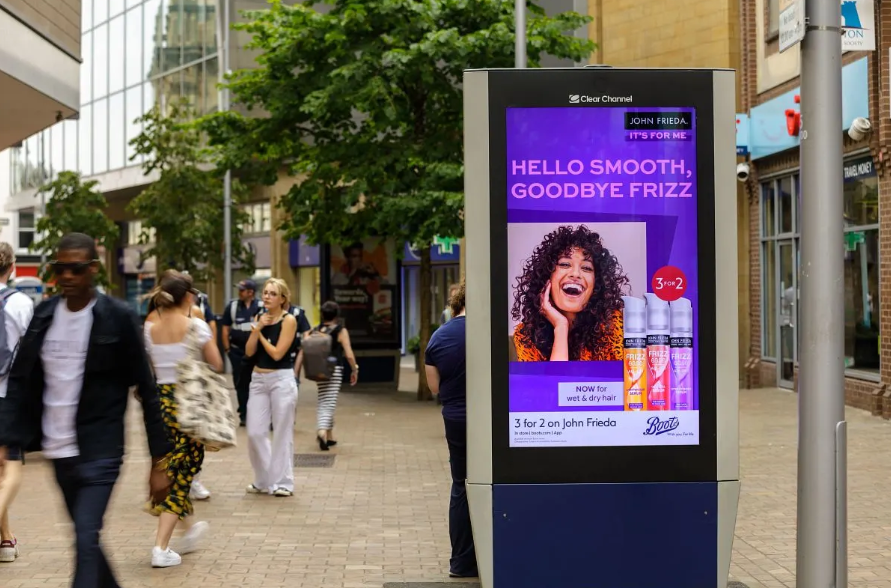 |
The Evolution of DOOH Advertising
Advancements in digital signage technology and OOH advertising software have transformed DOOH, overcoming previous limitations such as inaccurate audience targeting, lack of campaign measurement tools, and lengthy setup times. Beyond enhancing the visual appeal of static ads through sound and motion, today’s DOOH setups offer omnichannel activation and measurement capabilities, enabling brands to reach their target audience contextually and on a large scale.
Key features of modern digital OOH include:
- Programmatic Transactions (pDOOH): Facilitates seamless integration of multi-channel campaigns, precise audience targeting, time-specific ads, and automated transactions.
- Support for Diverse Content Formats: Includes digital images, full-motion graphics, 4K video, and dynamic HTML5 content.
- Real-Time Data Integration: Allows for quick and flexible campaign planning, as well as minute-by-minute measurement and reporting.
Conditional Playback and Triggered Ads: Integrated data sensors enable dynamic and interactive campaigns, increasing content relevance.
DOOH has evolved beyond simple one-way information dissemination. Today, the focus is increasingly on interactivity and engagement, as well as the interoperability of devices and content platform integration in a multi-channel approach: using a variety of screens—from desktops to video walls to mobile phones—that work together to deliver a unified message to consumers.
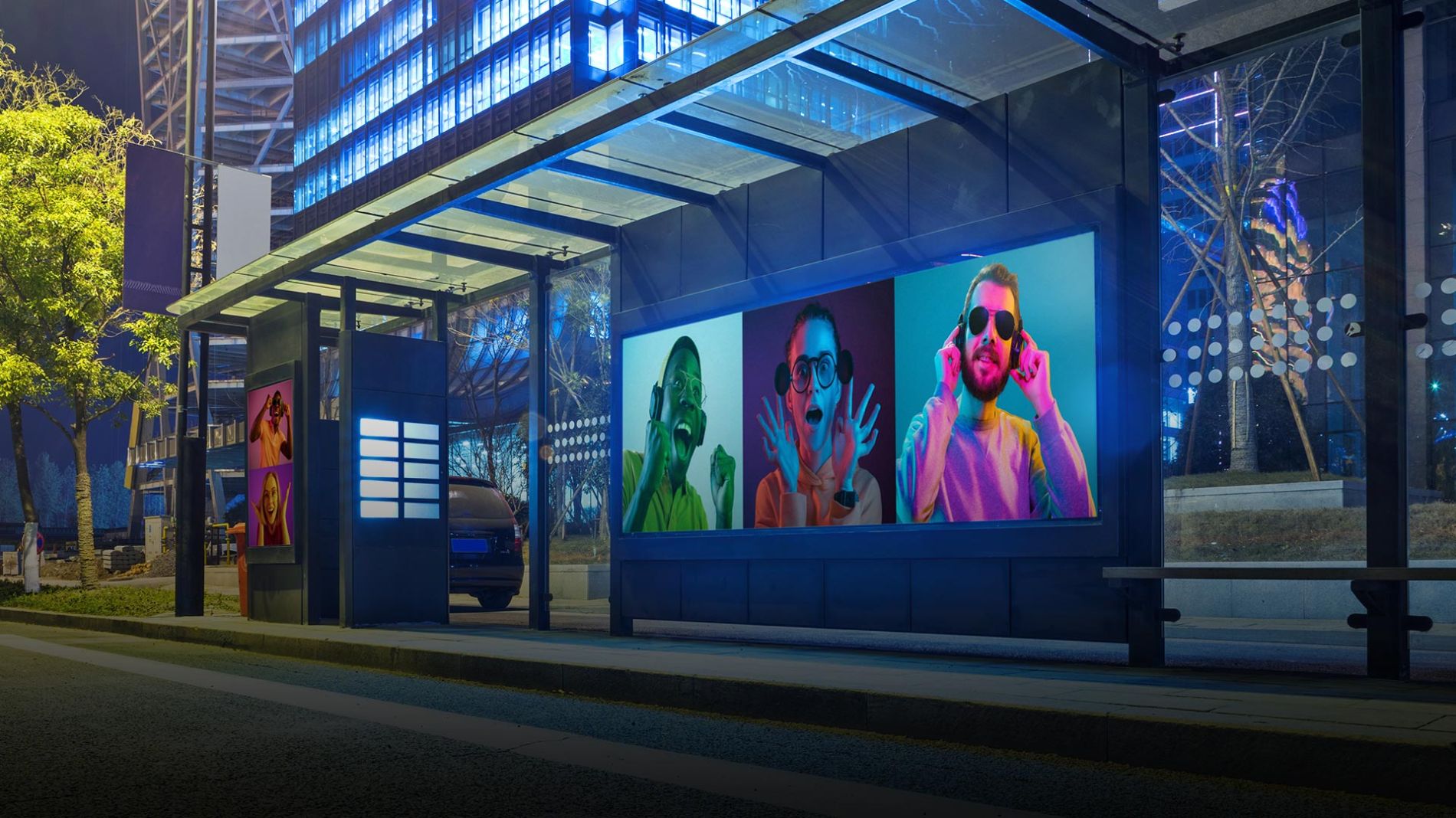 |
Prime Locations for DOOH Ads
DOOH placements can be found in most traditional OOH locations, with some exceptions where city regulations restrict their use. The global trend in digital advertising shows that DOOH is expanding with new digital screens being installed on buildings, replacing static billboards to optimize revenue. Digital signage can appear on everything from smaller screens like digital news kiosks to large digital billboards. Here are some key locations where brands can utilize DOOH advertising:
- Digital Billboards: Display your message day and night on large-format screens. Creative ideas can be incorporated during production to run 3D motion graphics that capture crowds.
- Digital Street Furniture: With options like bus shelter billboards and digital urban panels, businesses can impact pedestrian and mass transit audiences.
- Digital Screens in Malls, Restaurants, and Airports: Location-based advertising offers digital screens of various sizes, formats, and locations.
- Mobile Digital Billboards: Routes featuring video or electronic displays on digital billboard trucks.
- Digital Rideshare Screens: Mounted on the roofs of taxis or rideshare vehicles, these screens offer a street-level platform for broadcasting dynamic content.
- Gas Station and Rest Area Screens: As a form of location-based advertising, digital screens at gas pumps provide viewers with content while they wait for their tanks to fill.
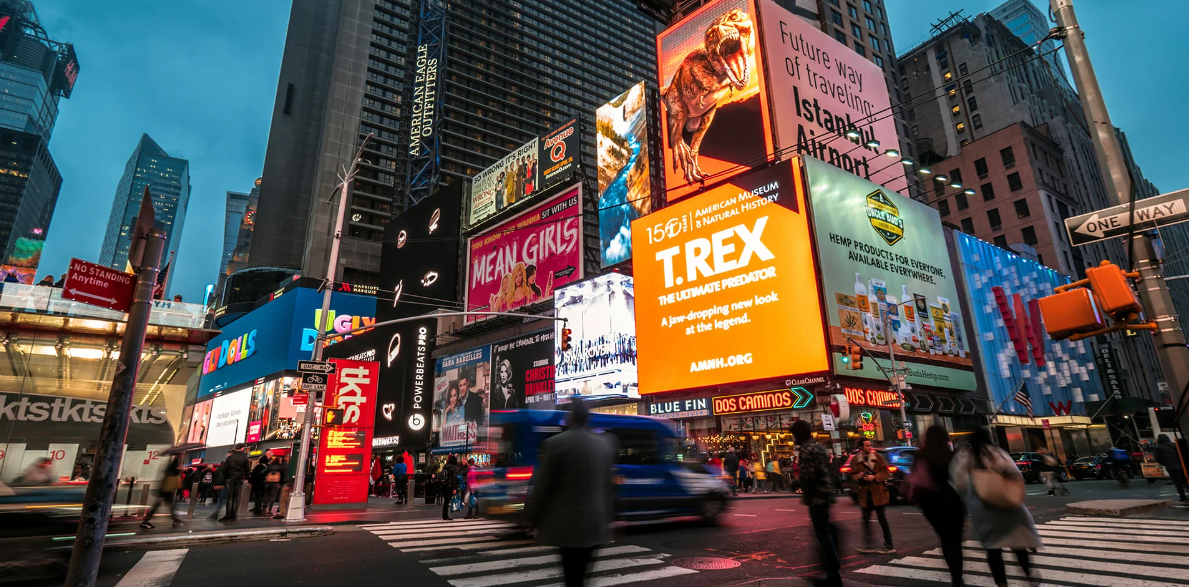 |
The Advantages of DOOH Advertising
Effective Audience Targeting:
- Location-Based Targeting: DOOH ads can be placed in specific locations to reach certain target audiences. For example, an ad for a fashion brand could be placed in shopping malls or retail districts.
- Time-Based Targeting: DOOH ads can be displayed at specific times of the day to reach target audiences who are most likely to view them. For example, a restaurant ad could be shown during lunch or dinner hours.
- Contextual Targeting: DOOH ads can be displayed based on surrounding environmental factors, such as weather or traffic. For instance, an ad for sunscreen might be displayed when it’s sunny.
- Data-Driven Targeting: DOOH ads can target specific audiences based on data collected from various sources, such as social media or purchase histories.
Increased Brand Awareness:
- Size and Placement: DOOH screens are often large and placed in highly visible locations, making them effective in capturing consumer attention.
- Creative Content: DOOH can utilize various forms of creative content, including videos, images, graphics, and sound, which help attract consumer attention and enhance brand recall.
- Interactivity: Some DOOH screens allow consumers to interact with ads, increasing brand recall.
Enhanced Marketing Campaign Effectiveness:
- Actionable Content: DOOH can be used to encourage consumers to take action, such as visiting a website or purchasing a product.
- Measurable Impact: The effectiveness of DOOH ads can be easily measured, allowing advertisers to track campaign performance and make necessary adjustments.
- Integration with Other Marketing Channels: DOOH can be integrated with other marketing channels, such as TV, online, and social media advertising, to create a comprehensive marketing campaign.
Reach Non-Internet Users:
- Offline Audience: DOOH can reach consumers who do not use the internet, such as older adults or children.
- Mobile Audience: DOOH can reach consumers on the move, such as drivers or pedestrians.
High ROI:
- Attention-Grabbing: DOOH ads are large and use vivid images and video, making them more effective at grabbing viewer attention compared to traditional ads.
- Brand Recall: DOOH ads can make a strong impression and help viewers remember your brand better.
- Call to Action: DOOH can be used to display clear and engaging calls to action (CTAs), increasing the likelihood of purchase by potential customers.
.jpg) |
How DOOH Enhances Brand Awareness and Consumer Engagement
DOOH offers many benefits for advertisers, both those who have previously leveraged traditional OOH formats and newer advertisers looking to expand their marketing channels, engagement levels, and reach. Here are some advantages of building a DOOH advertising strategy:
Cost-Effective:
With DOOH, you can buy ad space or, if programmatic, purchase based on impressions. Leveraging technologies like programmatic DOOH and the inherent automation capabilities of DOOH can help you expand your campaign reach in the most efficient way possible. Additionally, DOOH sometimes offers lower CPM (cost per thousand impressions) than other formats.
Increased CTA Responsiveness:
DOOH keeps your message and brand top-of-mind when your audience is out and about, where they are more likely to make a purchase compared to when they are at home viewing online ads. Responding to calls to action is much easier when they are at the point of action.
Precise Audience Targeting:
Most DOOH allows for precise audience targeting based on geography, audience behavior, time of day, or even local weather conditions. This advanced targeting capability enables businesses to reach their audience where they are most receptive to ads and when they are most likely to take the desired campaign action.
Creative Flexibility:
Businesses can create ads tailored to different locations and formats, displaying multiple messages that follow customers throughout their physical journey and their growing relationship with your brand. DOOH also allows businesses to easily swap out ads to keep their message fresh, avoid creative fatigue, perform A/B testing, and gauge audience reactions by turning ads on and off.
Integration with Other Marketing Channels:
DOOH works well when combined with other channels. Imagine the impact of someone seeing your online ad and then encountering it again while out and about during their daily activities. Engaging in a multi-channel marketing strategy will give your business more touchpoints to reach your audience and make your brand more likely to be top-of-mind when they are ready to purchase. Outdoor advertising parameters have been enhanced to allow businesses to target the same audience as their online channels, which can significantly amplify the overall message.
Engaging and Influencing Consumers Near Points of Sale:
DOOH can be placed in strategic locations like stores, malls, densely populated areas, and more to attract consumer attention and influence their purchase decisions. For example, DOOH screens can be used to display product information, promotions, or customer reviews to draw consumers into stores.
Case Studies in DOOH Advertising
Woolmark
Woolmark launched a DOOH campaign featuring full-motion digital videos in high-traffic areas in New York, France, and London to promote their sustainability message in fashion—especially concerning synthetic clothing. The video showed a screen filled with oil, accompanied by the statistic that every 25 minutes, an Olympic-sized swimming pool's worth of oil is used to make synthetic clothing. The oil then drains away, revealing a call to action for change and a woman standing in a completely transformed environment. This campaign leveraged DOOH’s storytelling power through a combination of striking visuals and clear messaging.Woolmark đã thực hiện một chiến dịch DOOH bao gồm video kỹ thuật số chuyển động hoàn toàn ở những khu vực sầm uất ở New York, Pháp và London để quảng bá thông điệp của họ về tính bền vững trong thời trang - đặc biệt là xung quanh các vấn đề về quần áo tổng hợp. Đoạn video cho thấy màn hình tràn đầy dầu, kèm theo chỉ số cứ 25 phút lại có một bể dầu cỡ Olympic được sử dụng để làm quần áo tổng hợp. Sau đó, dầu chảy ra và điều nổi lên là một CTA kêu gọi thay đổi và một người phụ nữ đang đứng trong một môi trường hoàn toàn thay đổi. Chiến dịch này đã tận dụng khả năng truyền tải câu chuyện của DOOH bằng sự kết hợp giữa hình ảnh mạnh mẽ và bản sao rõ ràng.
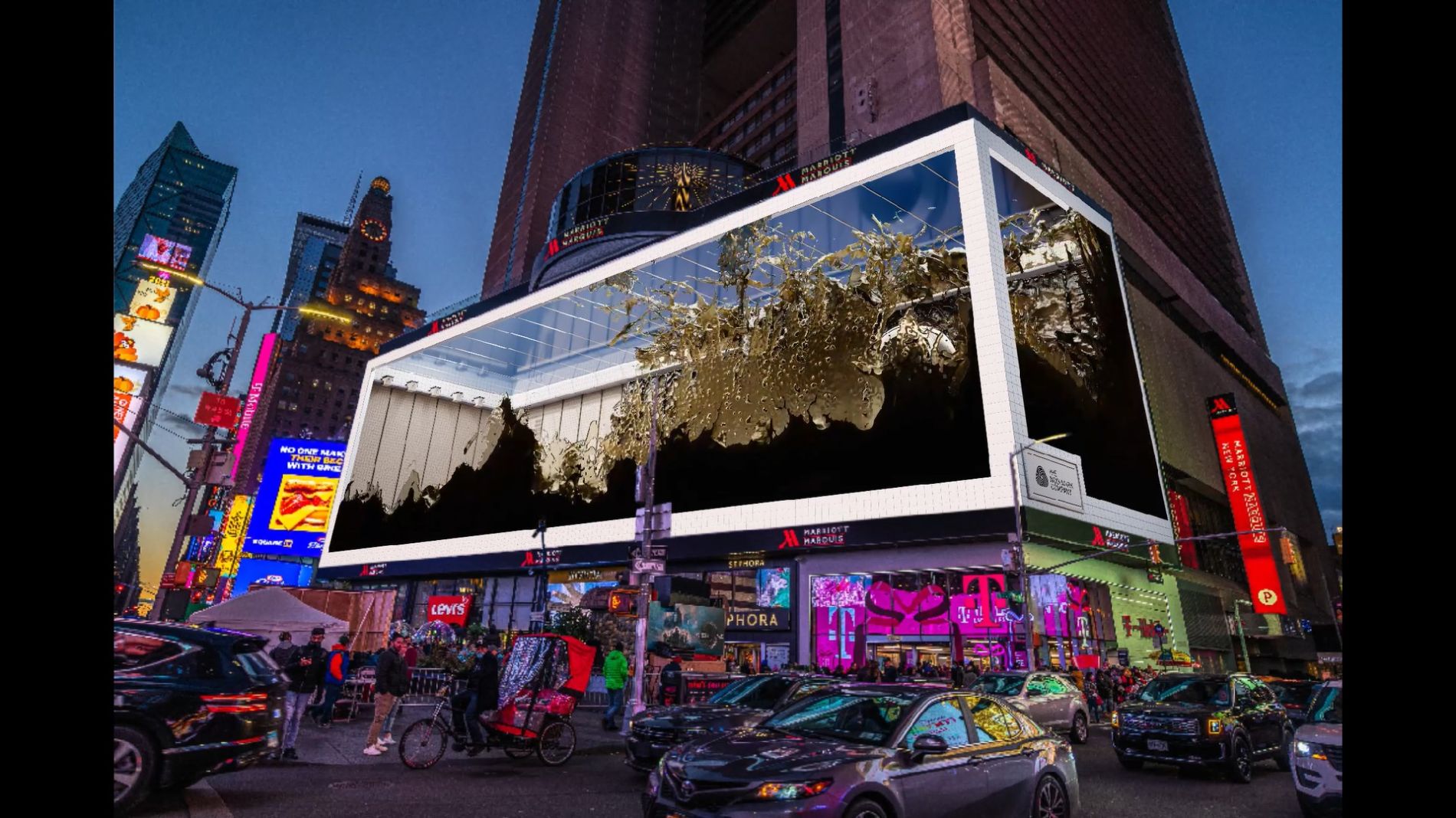 |
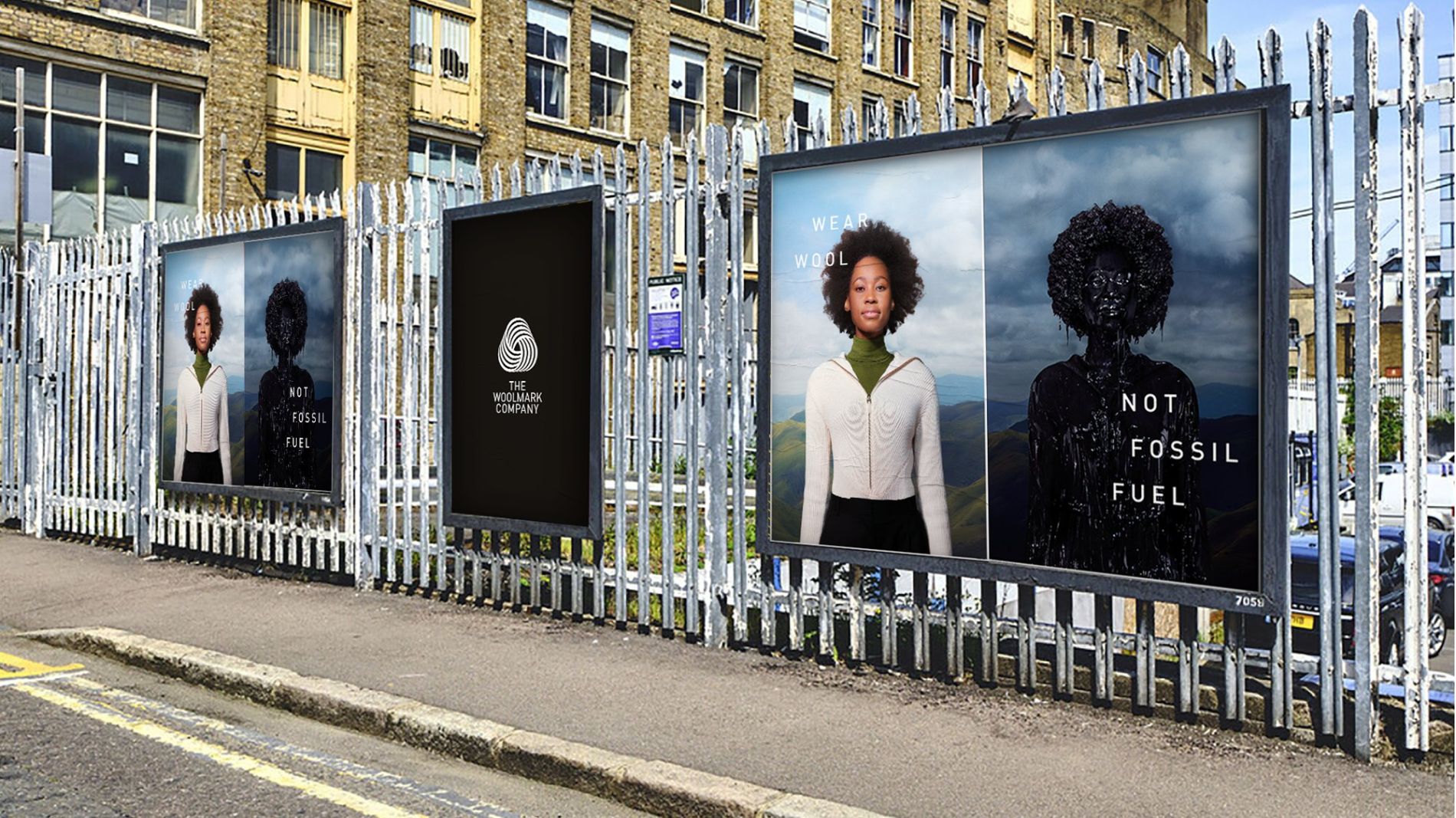 |
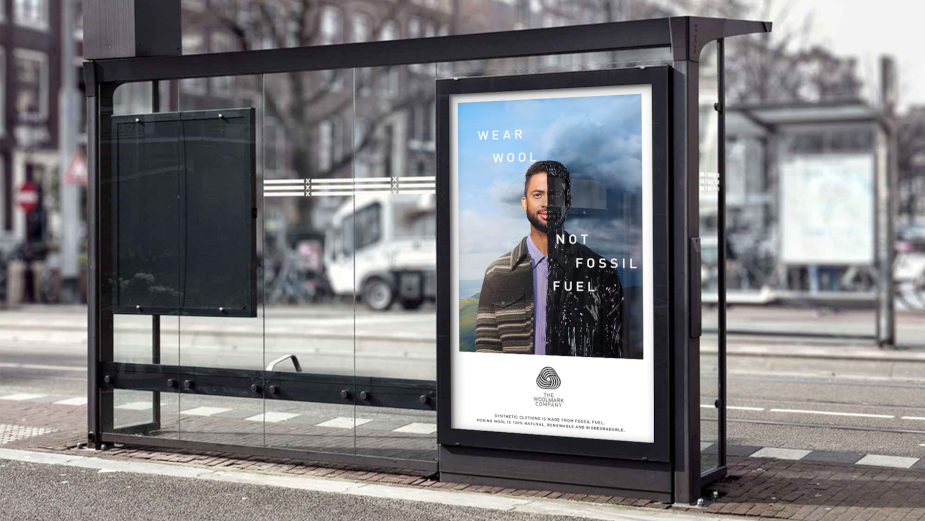 |
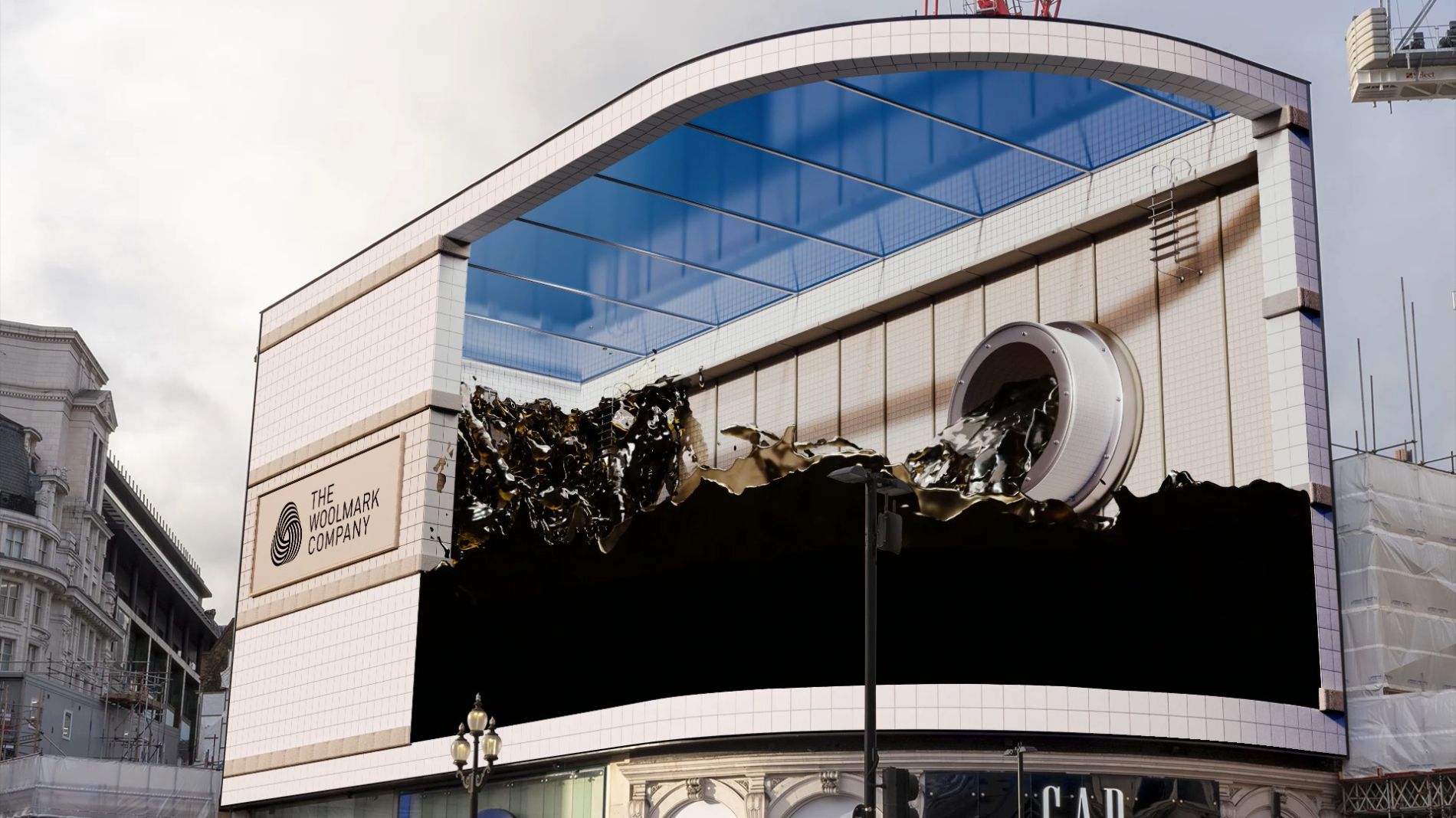 |
McDonald's
McDonald’s campaign in the UK serves as an intriguing example of DOOH advertising with dynamic content. The campaign showcased two of McDonald’s frozen beverages, Strawberry Lemonade and the “Millionaire’s Frappe.”
The campaign cleverly utilized weather data to promote these seasonal drinks. When temperatures exceeded 22°C—making cold beverages particularly enticing to passersby—the relevant ads were triggered to play on digital billboards.
If the temperature surpassed 25°C, the ads automatically updated to display the city’s name and the current temperature. As temperatures dropped during the evening, the city name and temperature details were removed from the ads.
Running throughout June and July 2019, this weather-responsive campaign promoted McDonald’s summer drinks in a far more engaging way than traditional static billboards. It delivered timely, relevant, and useful content to audiences, enhancing their evolving daily experiences.
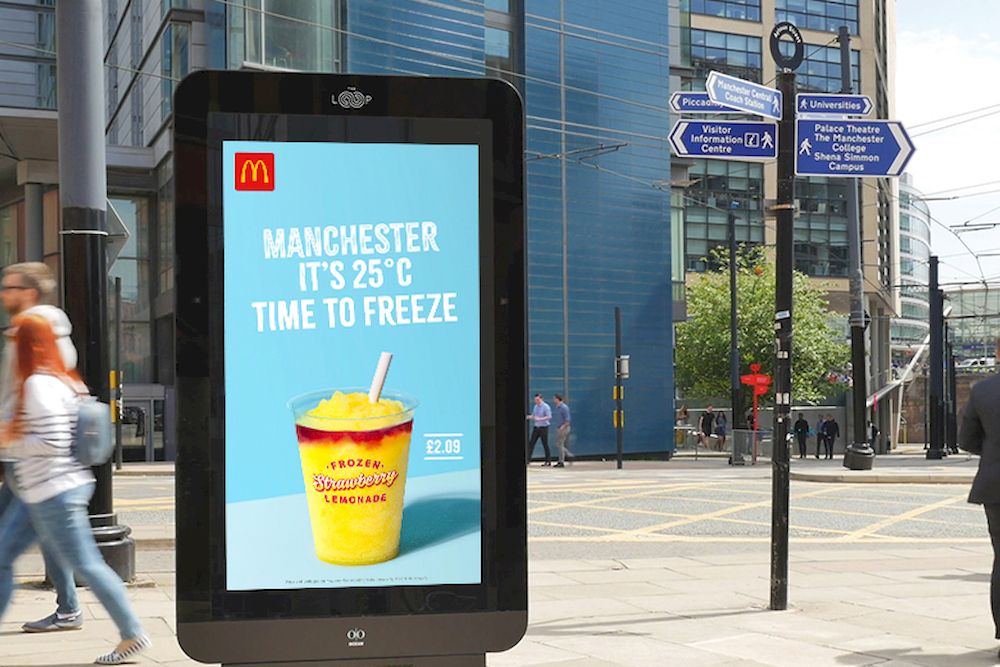 |
 |
DOOH is a powerful communication tool with the potential to offer businesses numerous benefits, such as enhancing brand awareness, attracting potential customers, and boosting sales.
As technology continues to evolve, DOOH will become increasingly advanced and effective, unlocking new opportunities for advertisers to reach and engage their audiences.
To succeed with DOOH, businesses need to clearly define their campaign objectives, select optimal screen locations, design creative and compelling content, and utilize data to measure campaign effectiveness and optimize performance.
Get ready for an exciting journey with DOOH!
See more:
FOOH: THE NEW TREND IN ADVERTISING
FOOH: THE "NEW WAVE" SHAKING UP THE ADVERTISING INDUSTRY
[CASE STUDY] MEMORABLE FOOH CAMPAIGN - CELEBRATING BAHARI BAHAMAS' 10TH ANNIVERSARY (PART 1)
TRÒN HOUSE
